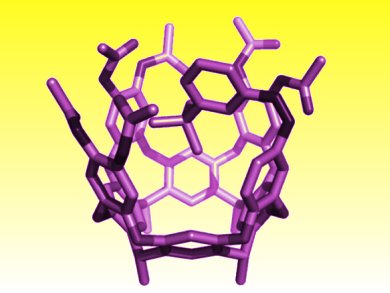Host molecules that completely entrap guest molecules — carcerands — were first described by Donald Cram, work for which he shared the 1987 Nobel Prize in Chemistry with Jean-Marie Lehn and Charles Pedersen. The real explosion in the field of molecular cages and capsules occurred with the introduction of self-assembled molecular capsules by Julius Rebek, Scripps Research Institute, California, USA. Since then, multitudes of self-assembled molecular cages and capsules based on various non-covalent interactions such as metal–ligand bonds, hydrogen bonds, van der Waals, and electrostatic interactions have been prepared and studied in the solid state, in solution, and even in the gas phase.
The most intriguing and important characteristics of such molecules is their use as nano-reactors, in which new chemistry may evolve. It has been demonstrated that carcerands and hemicarcerends can be used to stabilize reactive intermediates, while self-assembled molecular capsules and cages have been shown to catalyze reactions and to affect the course of chemical reactions. Very recently molecular capsules were shown to affect the photo-physics of different molecules, to affect the redox characteristics of redox-active guests, to change the photochemistry of a series of substrates, and to act as molecular photo-switches.
The intensive activity in recent years in the field of Cages and Molecular Capsules is reflected in the current issue of the Israel Journal of Chemistry. The issue was edited by Yoram Cohen and Liat Avram, Tel Aviv University, Israel. Cohen is a member of the Editorial Board as well as Professor and the Head of the School of Chemistry at Tel Aviv University. His research focuses on supramolecular chemistry as well as applications of NMR to chemical problems and to Brain research. Avran is a member of Cohen’s group, working on diffusion NMR for the characterization of Hydrogen-bond molecular capsules in solution.
Image: © Wiley-VCH
- Special issue on Cages and Molecular Capsules: From Structure to Catalysis
- Guest Editorial: Cages and Molecular Capsules: From Structure to Catalysis

Y. Cohen, L. Avram,
Isr. J. Chem. 2011, 51(7), 681–842.
DOI: 10.1002/ijch.201100071



